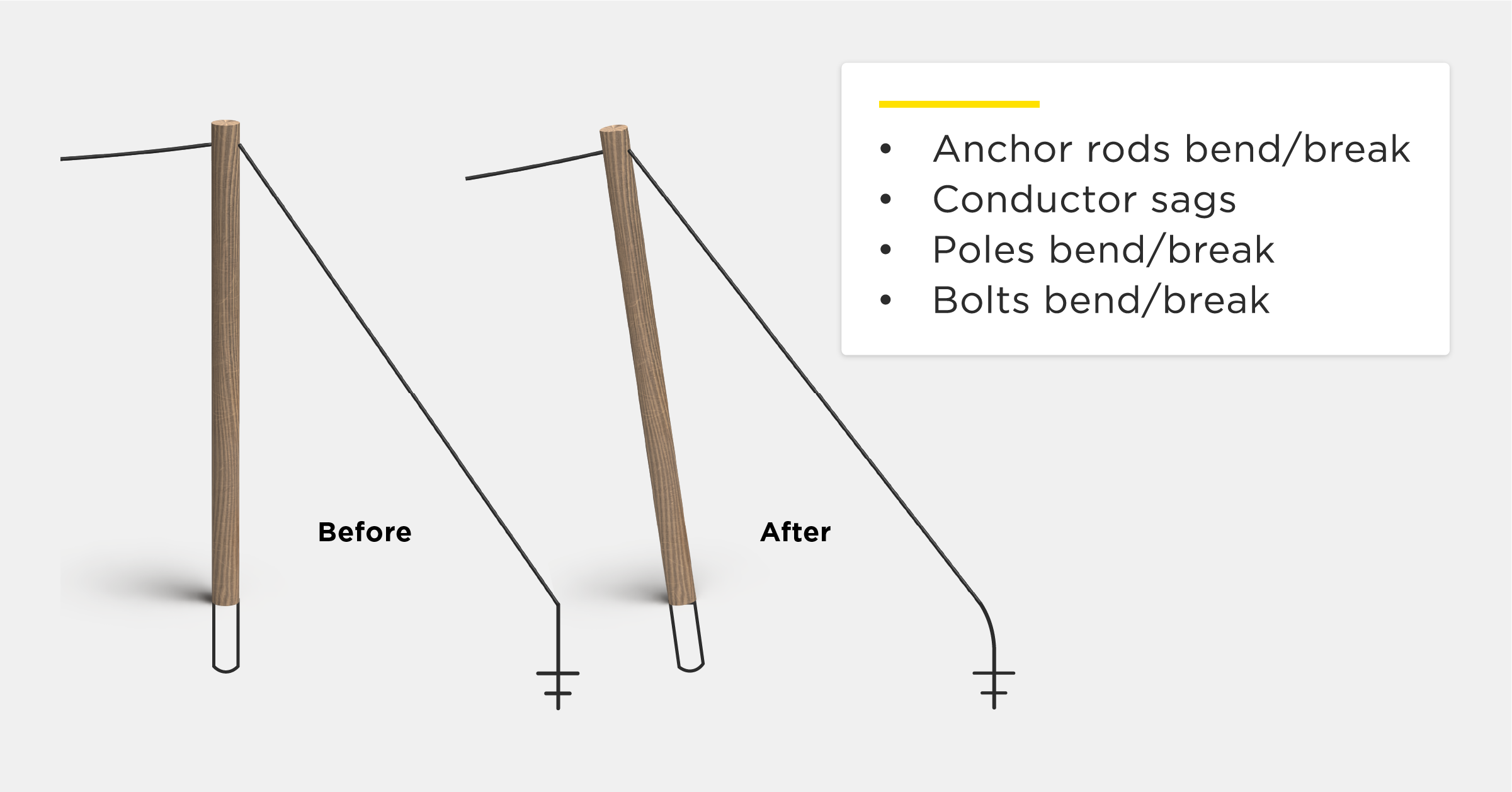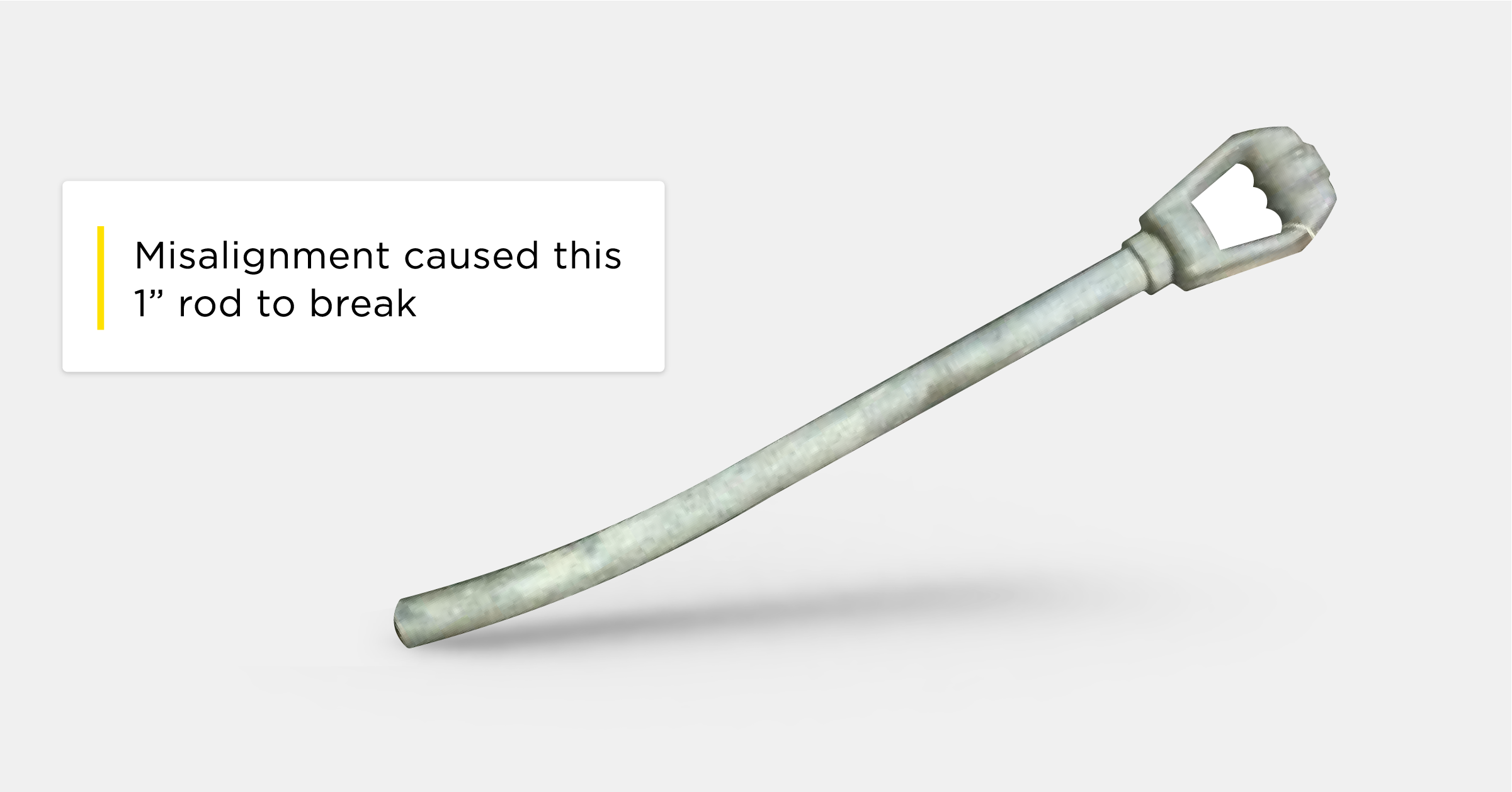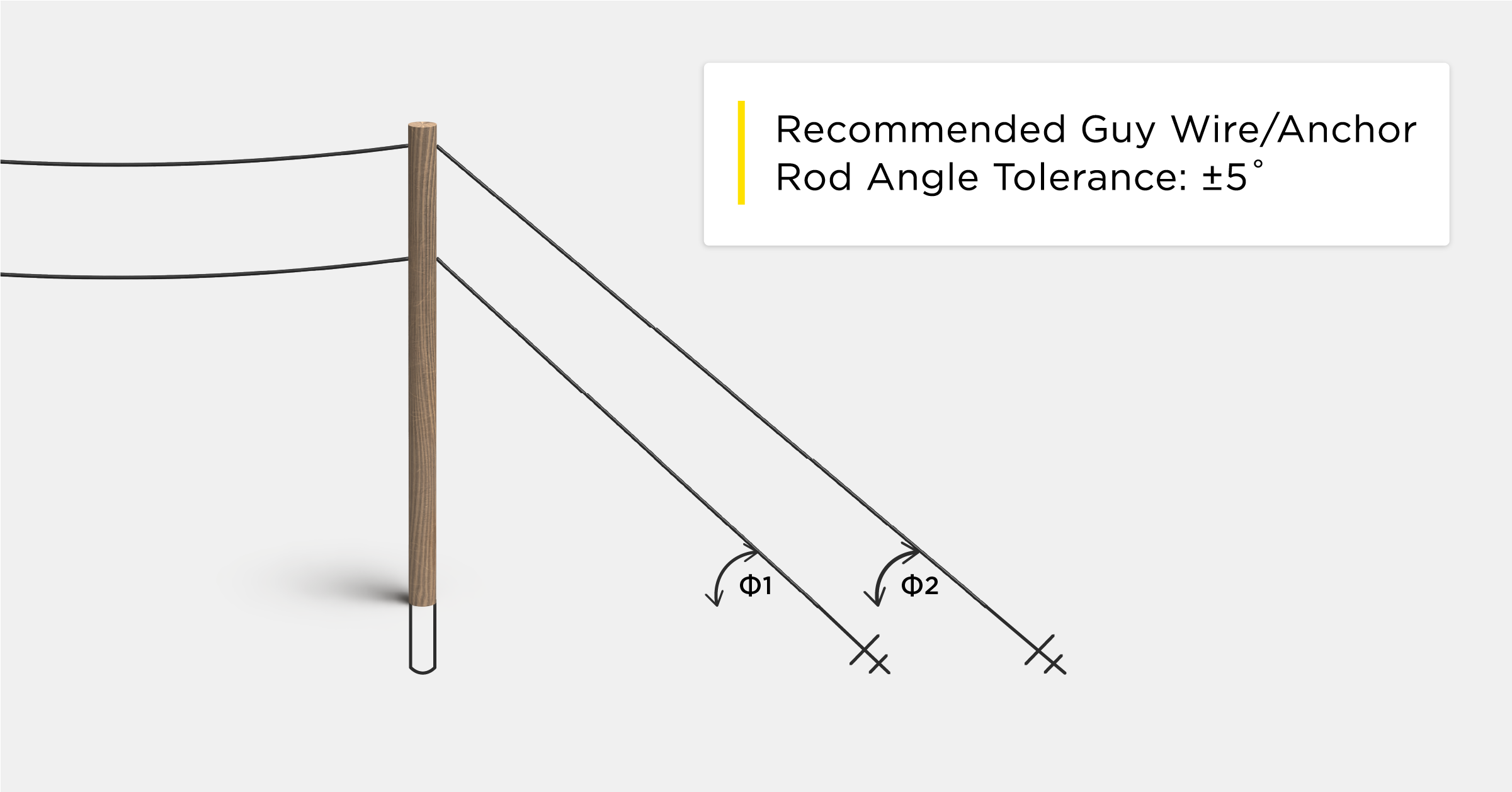When anchors go sideways
The bending stress and lateral load induced when an anchor is misaligned can cause the anchor shaft to translate sideways through the soil to align with the load. The lateral load in the shaft is dissipated by passive earth pressure from the soil supporting the shaft.

Soil type makes a difference
Hard soil
The shaft doesn’t translate sideways as much, thus there is greater chance for the combined stress in the shaft to exceed the elastic limit of the steel. This results in a bend or bow of the shaft.
Soft soil
The shaft translates sideways more, which reduces the bending moment but results in greater length of shaft dissipating the load via passive earth pressure.
Identify the cause
Estimating bending stresses in guy anchor shafts is difficult because the misalignment angle will continue to change as the anchor shaft translates sideways to align with the load. When the misalignment exceeds the recommended tolerance of ±5⁰, utilities will need to take action and remedy the situation.

To determine which remedy is most appropriate, utilities must first determine the cause of the misalignment.
Step 1: Check the structural tension strength of the anchor
Determine how the load compares to the strength of your anchor. What is the difference between the maximum applied load compared to the structural tension strength? Anchors with two to three times greater structural tension strength compared to the maximum applied load can withstand greater amounts of misalignment.
Step 2: Determine if the top-most helix plate has at least 5 feet of vertical depth below grade
Check to see if installation logs are available to confirm the specifications. Vertical depths of 5 feet or more below grade should prevent any bending stress in the shaft to extend deep enough to reach the top helix. In simple terms, if the anchor lead section is deep, misalignment will not affect anchor capacity. Instead, it will allow the opportunity for slack conductors since the anchor shaft will translate sideways through the soil to align with the load and may bend the shaft. If the anchor lead is shallow, replace the anchor.
Step 3: Proof-test the anchor to validate in-situ capacity at the current, misaligned angle
If the anchor is proof tested to its maximum proof load in a static test, it is likely to perform adequately long term. In some cases, anchors with up to 25⁰ of misalignment can be pull-tested without failure.
Now that you have learned the three steps to take to identify guy anchor alignment issues, click here to read our other blogs about anchors. You can also explore the latest blog topics from all of Hubbell Power Systems here.





